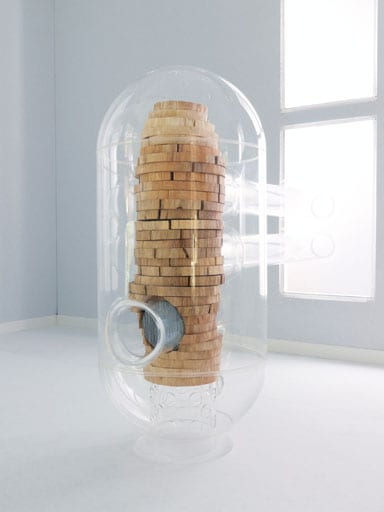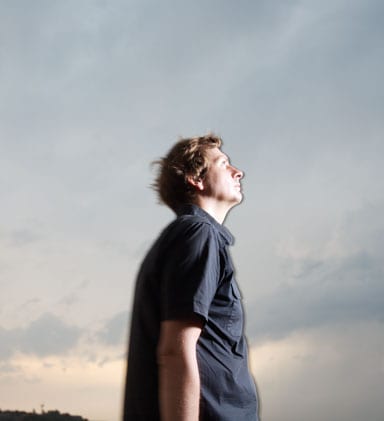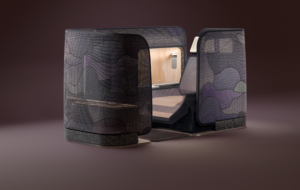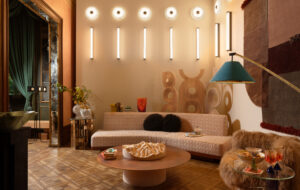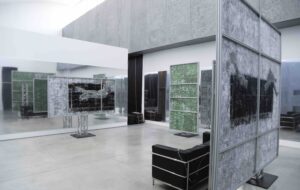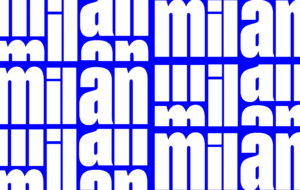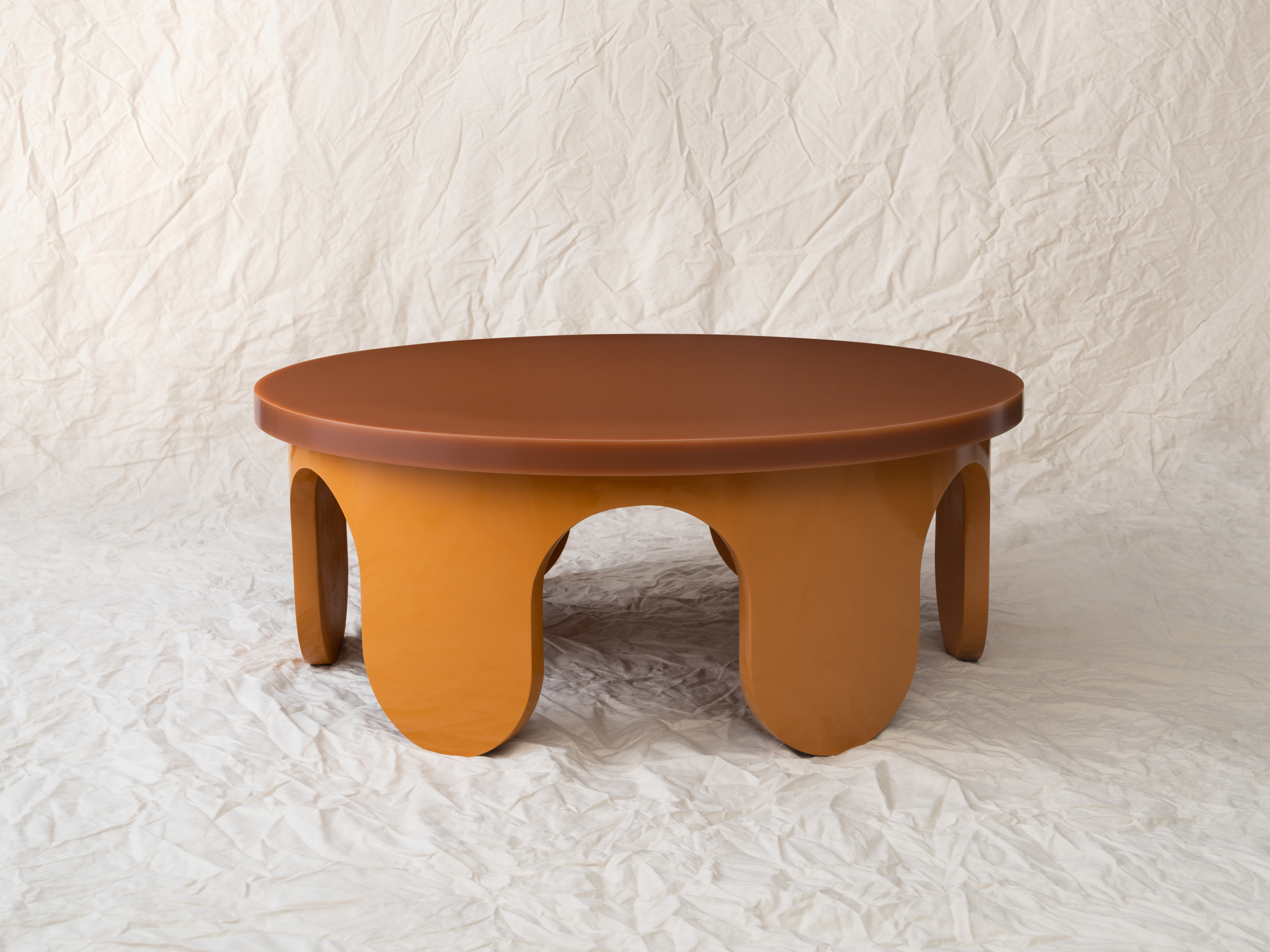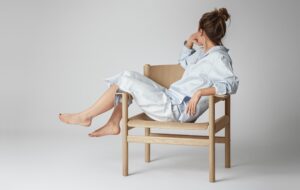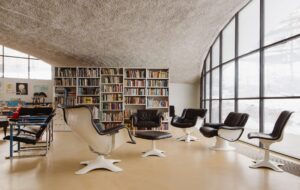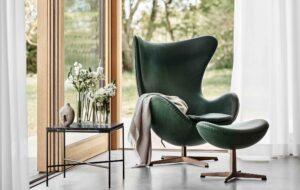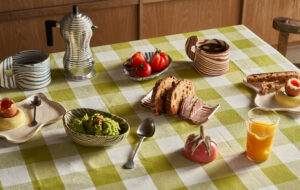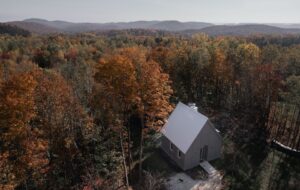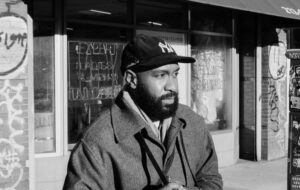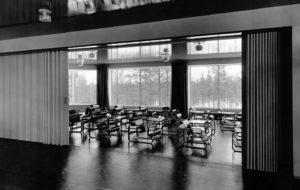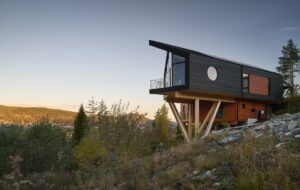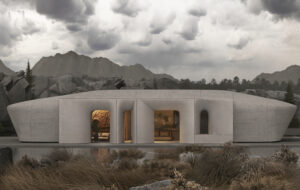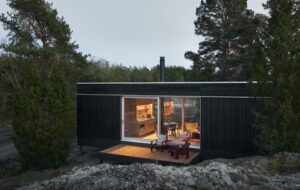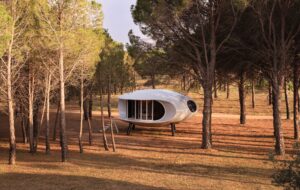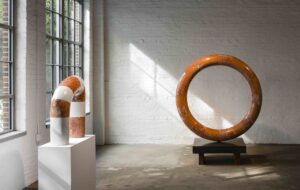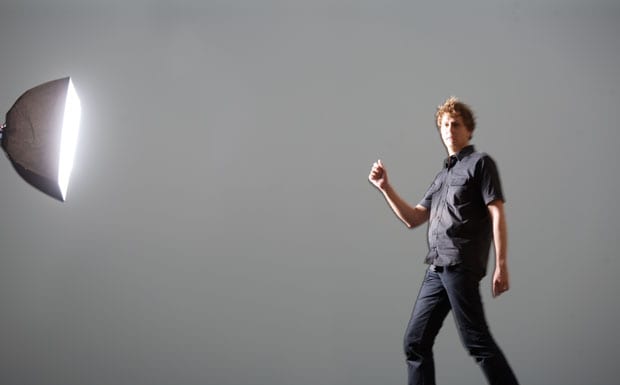
words Justin McGuirk
Philippe Rahm admits he’s a pervert. In fact, he’ll go further and describe what he does as “a double perversion”. It’s not just because he makes invisible architecture – light, heat and air are his most common materials – but because his project is to undo the greatest perversion that we humans have unleashed on nature: modernity.
What is fascinating about Rahm’s work is that it offers an essentially new proposition of what architecture is. You could describe it as atmospheric design. And one of the reasons why it is so compelling is that, even though Rahm would not describe himself as a “sustainable designer”, he is one of the very few architects approaching the subject of climate change laterally. Thus far, the environmental cataclysm facing the planet has been met by a spectacular failure of the avant-garde, with architects throwing a prosaic toolkit of green roofs and insulation panels at the problem. Not Rahm. For him, climate change is not just an ecological disaster, it’s a modus operandi. His mantra is “form follows climate”, and he sees atmospheric conditions as the very stuff of architecture. The question is, will his work ever affect the way the rest of the profession thinks, or will it merely linger interestingly in the margins?
“As a ‘citoyen’, I want to preserve the planet, but it is not my main interest,” says the Swiss architect in his thick accent, using the French word for “citizen”. “My main interest is to renew the language of architecture through all these questions of climate; to discover new ways of living, new ways of designing the space, and so it’s more like the change of the paradigms.”
Communicating his ideas is a challenge, not just because of the language barrier but because they often rely on quite complex science. He has a tendency to write rather impenetrable texts about them that sound like they’ve been fed through Google translate. At one point I struggle to understand what he’s trying to say and he graciously goes back to the beginning: “Yes, OK, alors, yes – sorry – I will become more comprehensible.”
We have met a few times but an article about his work never materialised because it was always waiting for some fantastic project to finish – but the projects never do finish because they are too perfect for the real world, too ineffectual as architecture and too expensive. Rahm, however, is in great demand on the exhibition circuit. And so his work has manifested itself as a series of rarefied experiments that, taken together, seem to create a parallel world in which we humans are manipulated either with light or oxygen, temperature or humidity, or through our melatonin levels – the hormone that induces sleep. It’s like something from science fiction, by turns romantic and protective or meddlesome and creepy, depending on your point of view.
At last September’s Venice architecture biennale, where we last spoke face to face, Rahm was exhibiting a work called the Digestible Gulf Stream. It consisted of two metal plates, a warm one on the ground and a cold one just above head height. Apparently, those two plates generated an air current that was a miniature approximation of the Gulf Stream (the warm current across the Atlantic) dividing the space into warm and cool zones. The piece was one of the most popular exhibits in the Arsenale, maybe because it was inhabited by naked men and women playing musical instruments. Rahm’s point was to represent a kind of Eden, where man can choose his spot by the feel of the air against his skin.
Digestible Gulf Stream proposes a means of designing that relies on temperature rather than drawing or conventional proportions. Every room in a house has an optimum temperature, and so by creating a temperature landscape, you can place them where they naturally belong – for example, with the bathroom higher up, where it’s warmer. Rahm is designing a house for the French artist Dominique Gonzalez-Foerster that uses this principle. It is a sinuous wooden frame within a glass box that dispenses with walls and has impractical-looking gaps in the floor so that air can circulate freely. If his other house commissions are indicative, the odds are that it will never be built. Even as just an idea, however, the house is significant.
These works embody what has become the defining theme of Rahm’s work: simulating natural conditions indoors. He wants to reverse the perception that what happens outside is “natural” while inside is unnatural.
“If you want to inhabit the natural world, you have to produce it artificially,” says Rahm. The way he sees it, there is no such thing as “natural” anymore. Since the industrial revolution, we have been gradually turning up the Earth’s thermostat and polluting its elements. The weather, the air quality, the water in our rivers – none of it is natural anymore. And so there is nothing left but to recreate nature – as some freakish approximation of the pre-modern atmosphere – inside. This is Rahm’s “double perversion”. It has a Cold War feel to it, this idea of leaving the outside to its fate and living in some Buckminster-Fulleresque artificial bubble. It’s a touch nostalgic, but also fatalistic and fundamentally dystopian. Is that really where we’re headed?
Interestingly, Rahm’s unorthodox pursuit of an invisible architecture has solid Swiss roots. It is a truism that Swiss architects, led by the likes of Herzog & de Meuron, focus closely on their use of materials. Rahm, who is from Lausanne, studied under Miroslav Şik at ETH in Zurich, and was taught that materials don’t just have a look, they have a feel and a smell. But he took that idea of designing for the senses one step further, and, ironically, fixed on the immaterial. He first came to attention in the late 1990s as part of a practice called Decosterd & Rahm, but in 2004 his partner Gilles Decosterd returned to the more practical concerns of everyday architecture, leaving Rahm on the experimental fringes, knee-deep in scientific research and always threatening to deliver something extraordinary.
“The late Nineties was a moment of the invisible, with the mobile phone and computers and electro-magnetism,” he recalls. But when he discovered the impact that light has on the body – its effect on our hormonal and circadian cycles – he started to see the potential for a physiological architecture. “At this moment, I understood that architecture is not only what you see, but it becomes something biologique,” he says, reverting to French again.
Representing Switzerland at the 2002 Venice biennale, Rahm created one of his most affecting installations. The Hormonarium attempted to create a public space that had the same effect on the body as being on the top of a mountain at 3,000 metres. Under a Plexiglas floor, 528 fluorescent tubes pumped out blinding light, while nitrogen thinned the air by reducing the oxygen. The room was supposed to stimulate the body’s endocrine system, and it worked. “It was like being high, it was wonderful,” says the scientist Anna Wirz-Justice. A renowned chronobiologist – the science of biological rhythms – Wirz-Justice introduced light therapy to Europe, and much of Rahm’s work has been based on her research.
“I’ve loved having the exchange,” says Wirz-Justice from her Basel lab about working with Rahm. “There aren’t many architects out there looking at the impact of our environment on humans.” Yet she confesses that he is not always entirely scientific. For Diurnisme at the Centre Pompidou in Paris, for example, Rahm created a room filled with orange light that was supposed to make you more awake by suppressing your melatonin. The only problem, she points out, is that you don’t produce melatonin in the daytime and so it would never have worked.
Rahm concedes that his work is often “kind of poetic and not completely scientific”. His latest piece is a perfect example: an energy-efficient air conditioner that generates pure Parisian air. It works by filtering the air across limestone so that it has the same mineral quality as the air that sweeps across the limestone plains between Normandy and Paris, except it is purer – pre-industrial revolution quality. “It’s a little like when you drink wine, you have the feeling to drink a little piece of somewhere,” says Rahm. Or perhaps it’s closer to being able to taste the difference between Evian and Volvic. Are we really sensitive enough?
Rahm’s work is full of such paradoxes and perversions. “I try to introduce an air of irrationality,” he says. Yet by indulging in such hypothetical, poetic works, is he not passing up the opportunity to make meaningful contributions to real architectural practice? Anna Wirz-Justice suggests as much. “He remains the dreamer and the artist, whereas I’d like to turn my biology into something built, so that old people or school kids are in a lighting environment where they feel better,” she says.
Rahm claims that he has no intention of merely being an artist. “Exhibitions and art are not my interest,” he says, “it was only the possibility [that they represent] to research architecture.” In fact, for the first time Rahm feels that the tide is turning. He reveals two new commissions for buildings that are not experimental houses for unorthodox clients but commercial propositions. He has just won a competition to design a sports centre in Lyon, and is waiting for planning consent to start building an office and retail development in Marghera, outside Venice, complete with “winter” and “summer” zones.
Given the fears that climate change generates, it would be easy to take a moralising tone to Rahm’s work: for instance, if he wants to change things, surely it’s his responsibility to be completely scientific and to apply the principles he plays with in the real world.
The biggest problem with Rahm’s work is that although the ideas are often captivating, the effects are so subtle. It’s as though he’s designing for a future in which we have evolved to be hyper-sensitive to our environmental conditions. He may aspire to change the way we think about architecture, but the question is whether he can ever push atmospheric design far enough to convince people. If that happens, then Rahm may find himself sucked from the margins reserved for eccentric theorists and thrust into the spotlight.
Portrait byDavid Levene
